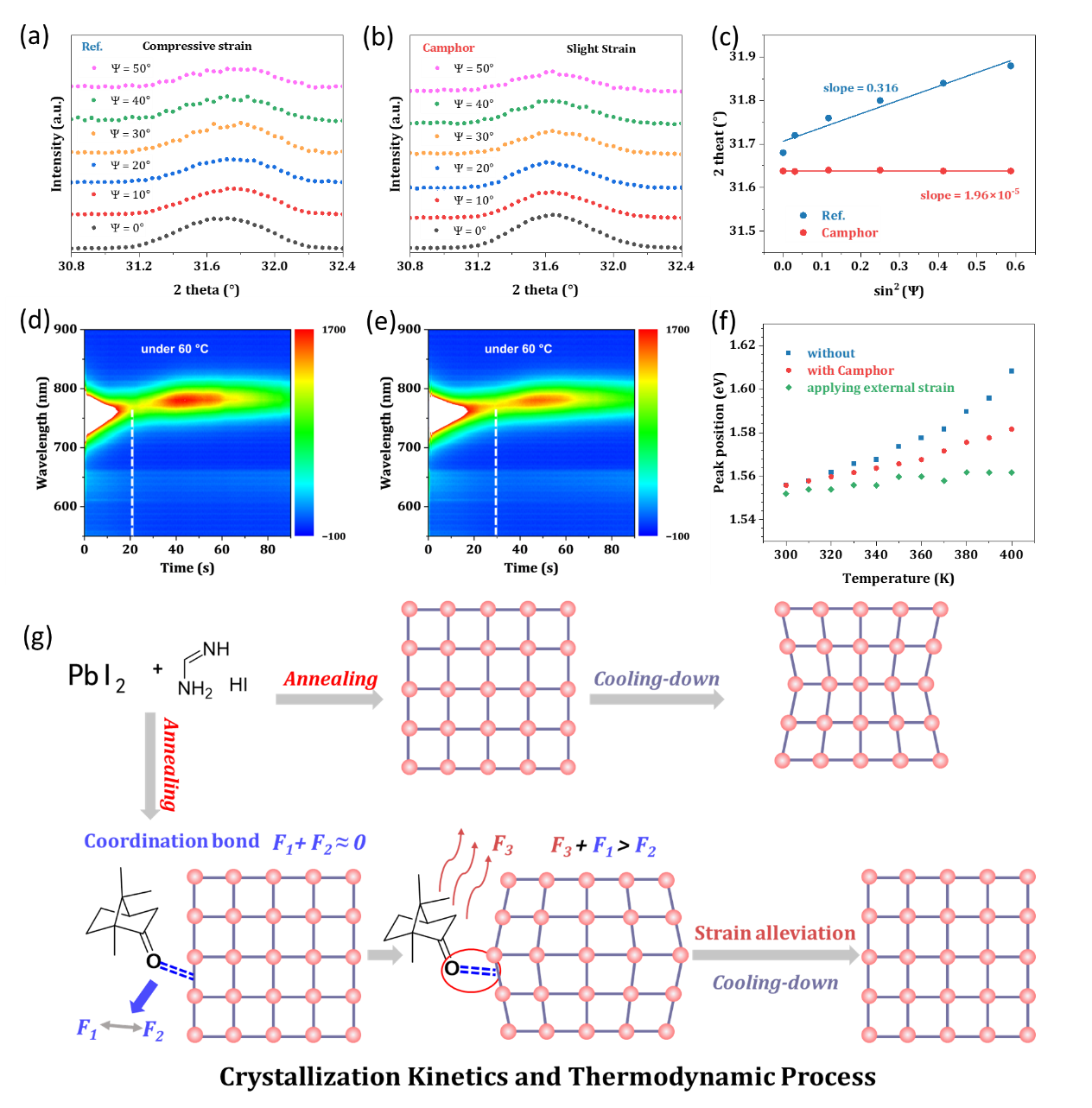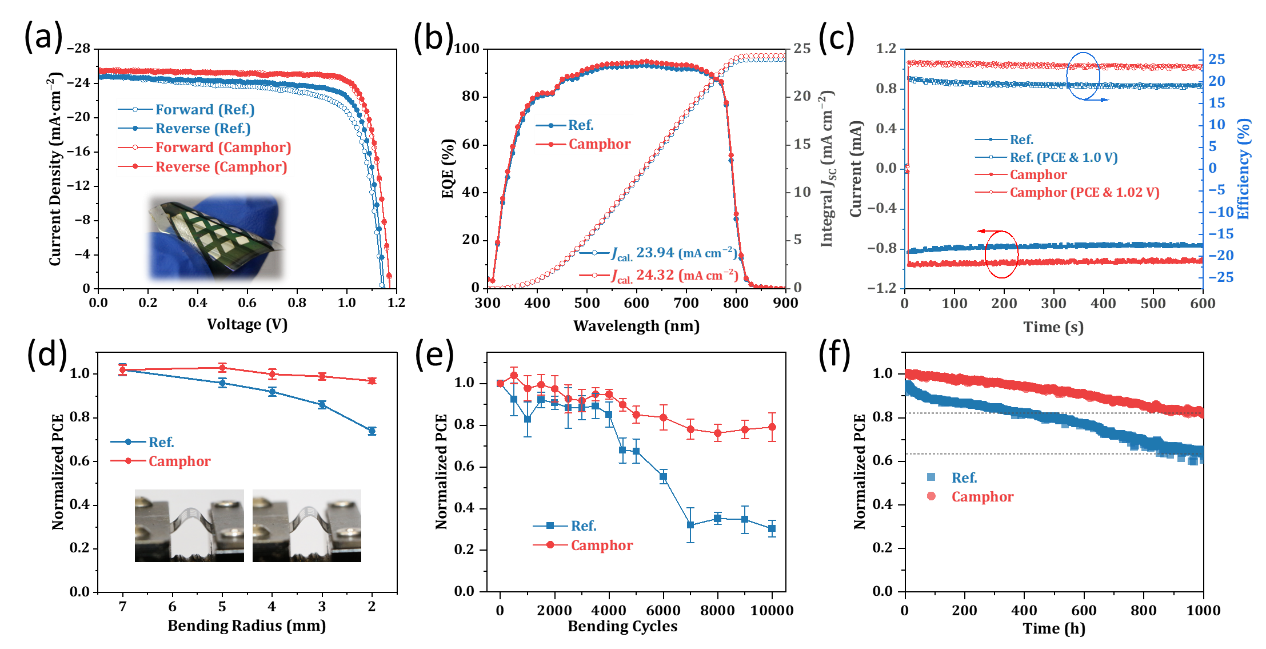Flexible perovskite solar cells (f-PSCs) not only exhibit a high power-to-weight ratio, but also demonstrate stable operation under complex environments such as bending and folding, which greatly promotes the application of f-PSCs in wearable devices, photovoltaic building integration, and other scenarios. However, during the thermal annealing process, the mismatch of the lattice and thermal expansion coefficients between the perovskite film and the flexible substrate process easily produces a significant strain in the perovskite film. This severely limits the photovoltaic performance and mechanical flexibility of f-PSCs. Therefore, the strain regulation of perovskite film on the flexible substrate caused by the mismatch of thermal expansion coefficient is a key point in improving the photovoltaic performance and mechanical flexibility of f-PSCs.

Figure 1: Stress release and thermodynamic regulation mechanism in perovskite film prepared on the flexible substrate.
In this study, a thermodynamic regulation strategy to release the stress of perovskite film caused by the mismatch of the lattice and thermal expansion coefficient. Firstly, camphor, natural and nontoxic, exhibits a strong affinity with Pb2+ or FA+ due to the strong electronegativity of the carbonyl functional group. Then, utilizing the process of thermal sublimation ofcamphor, additional tension is applied to the compressed lattice, which effectively releases the residual stress in the perovskite film. Furthermore, by conducting the microscopic strain analysis and optimizing the fabrication process of perovskite films on flexible substrates, this study finally successfully prepared p-i-n f-PSC with an efficiency of up to 24.5%. Notably, the device retained 80% of the initial efficiency value after 10,000 mechanical bending tests. This work proposes a facile thermodynamics strategy for the manufacture of high-efficiency f-PSCs with tiny mechanical stress and ensuring favorable flexibility and long-term stability.

Figure 2: Photovoltaic performance and mechanical stability of flexible perovskite solar cells.
The work was published in Energy & Environmental Science under the title "Stress Release via Thermodynamic Regulation towards Efficient Flexible Perovskite Solar Cells. The first author is Xu Zhiyang, a PhD candidate from the Advanced Innovation Center for Soft Matter Science and Engineering(BAIC-SM) at BUCT. Corresponding authors are Yu Runnan, Associate Professor at the School of Materials Science and Engineering; Tan Zhan’ao, Professor at BAIC-SM, BUCT; and Zhou Erjun, Professor at Jiaxing University. This research work was financially supported by the National Natural Science Foundation project.
Article information: Zhiyang Xu, Runnan Yu, Tangyue Xue, Qiang Guo, Qianglong Lv, Chen Zhang, Erjun Zhou, Zhan’ao Tan, Stress Release via Thermodynamic Regulation towards Efficient Flexible Perovskite Solar Cells. Energy Environ. Sci., 2025, DOI: 10.1039/D5EE00342C.
Original article link:https://doi.org/10.1039/D5EE00342C